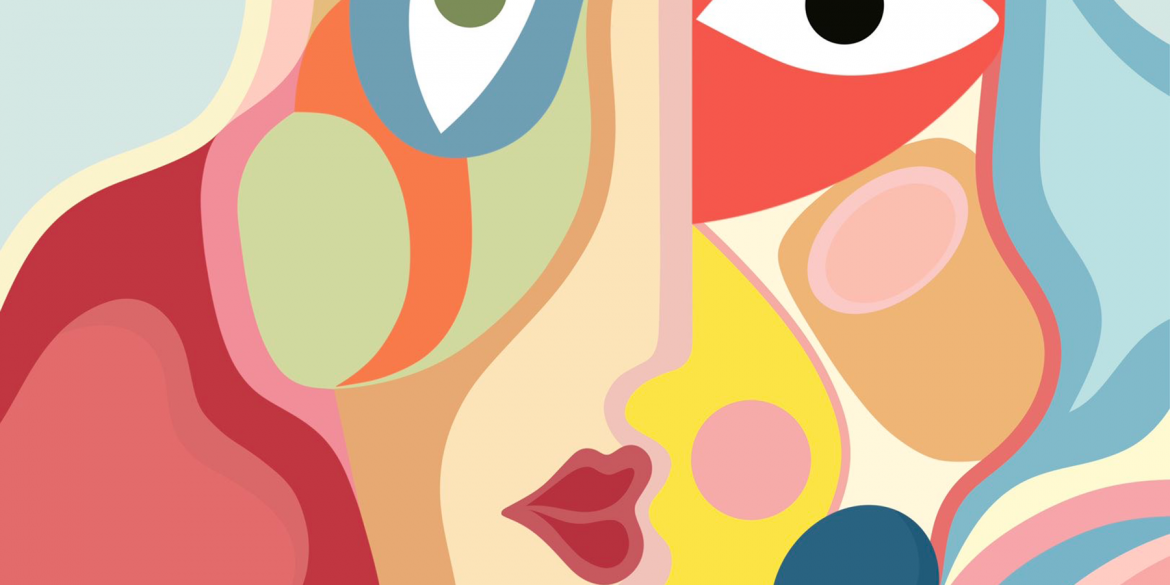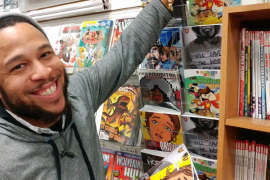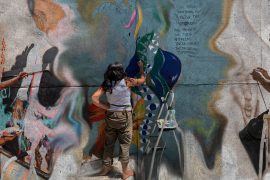Being a visual artist today can be encompassed through many mediums. For some people, it’s a mixture of many. For Connor Sinclair, his journey is depicted through minimal, intimate drawings, colorful paintings and intricate digital works. Connor is a visual artist based in Chicago, IL. His work is focused on geometric abstraction with bold use of color and a pristine sense of life. I had a chance to meet with him via Zoom to chat with him about his work, processes, influences, the crypto art community & life as an artist.
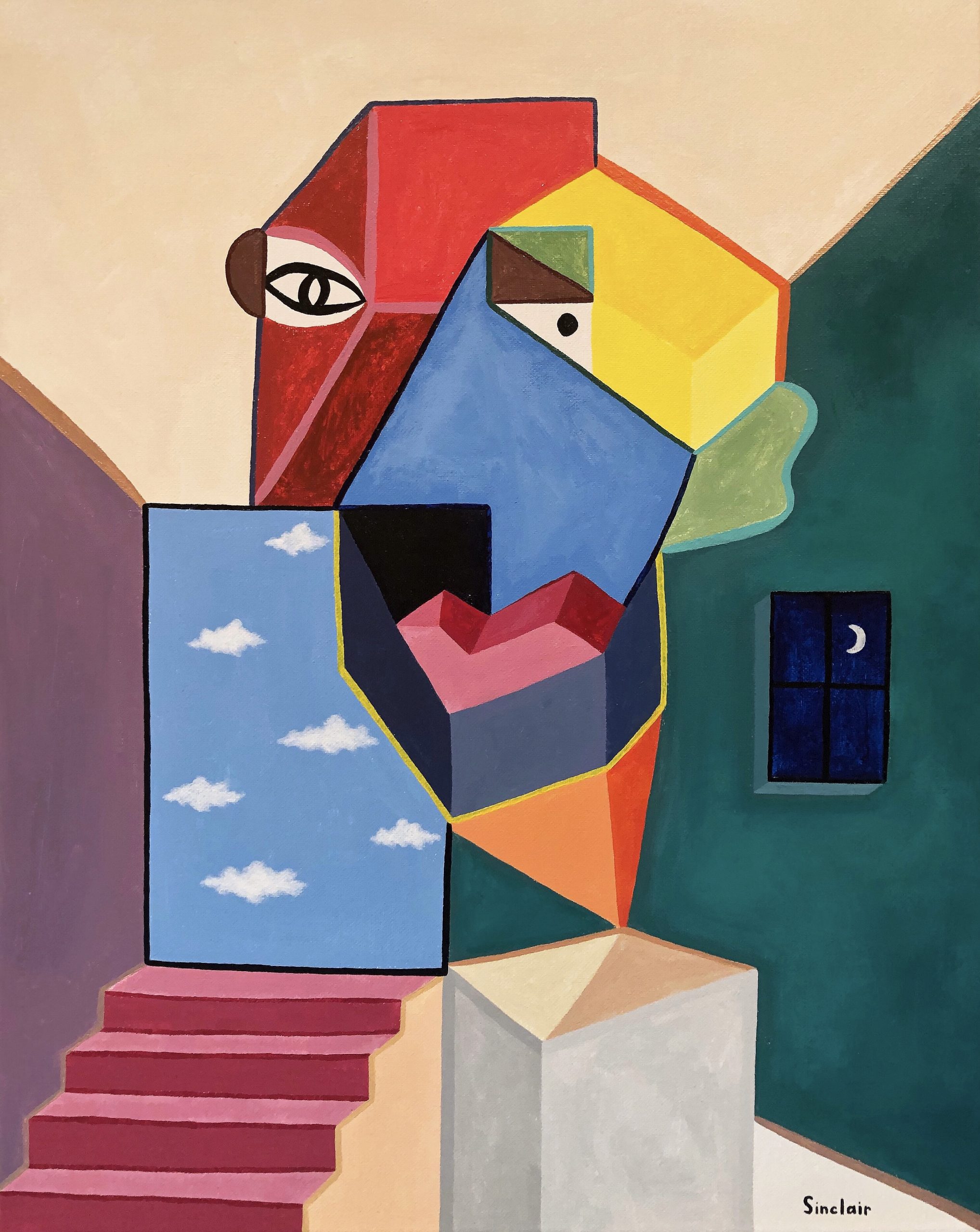
Michael Cottone: To begin, I’ll just ask about your background. How long have you been an artist? What originally got you into art?
Connor Sinclair: During my senior year in high school, I really started getting into fashion and streetwear. I was looking for the perfect t-shirt just to wear and I decided to make it! The first time I actually painted was on t-shirts, and from there I started getting more into art and experimenting with art via clothing. During that time I was also drawing people with one line to represent this idea that we’re all connected, and I think that’s where I began really falling in love with art. I posted some of the drawings online and people responded really well to them. From there I decided that painting had to be my next step. All the masters of art are painters, ya know? The first time I painted was 2017 or 2018 I think. Right when I painted the first brush stroke I felt this shift energetically. That’s when I knew I was going to be an artist for the rest of my life.
MC: Do you have particular influences in the art world?
CS: I have so many. Even though I’m not in art school and I didn’t go to art school, I still study art regularly. I’d say my first big influences were the Impressionists like Monet, Renoir and Van Gogh. I loved all the brush strokes in their work. From there you have your Picassos, Warhols, De Koonings and Basquiats that influenced me, but I think right now my goal is to get to George Condo level of painting. That man’s a master.
MC: When you paint, what’s your environment like? Do you paint in silence, do you have noises or visual things going on around you?
CS: Yea! Going into a studio is almost a ritual, honestly. I go in there and leave everything at the door. My inspiration is everything that happens outside the studio. When I get into the studio, I know all that matters is creating. My process is kind of like a dance. I usually will be working on multiple paintings and drawings at a time. I’ll jump between them and because of that, sometimes something I paint will directly inspire me to put something on a drawing, and vise versa.
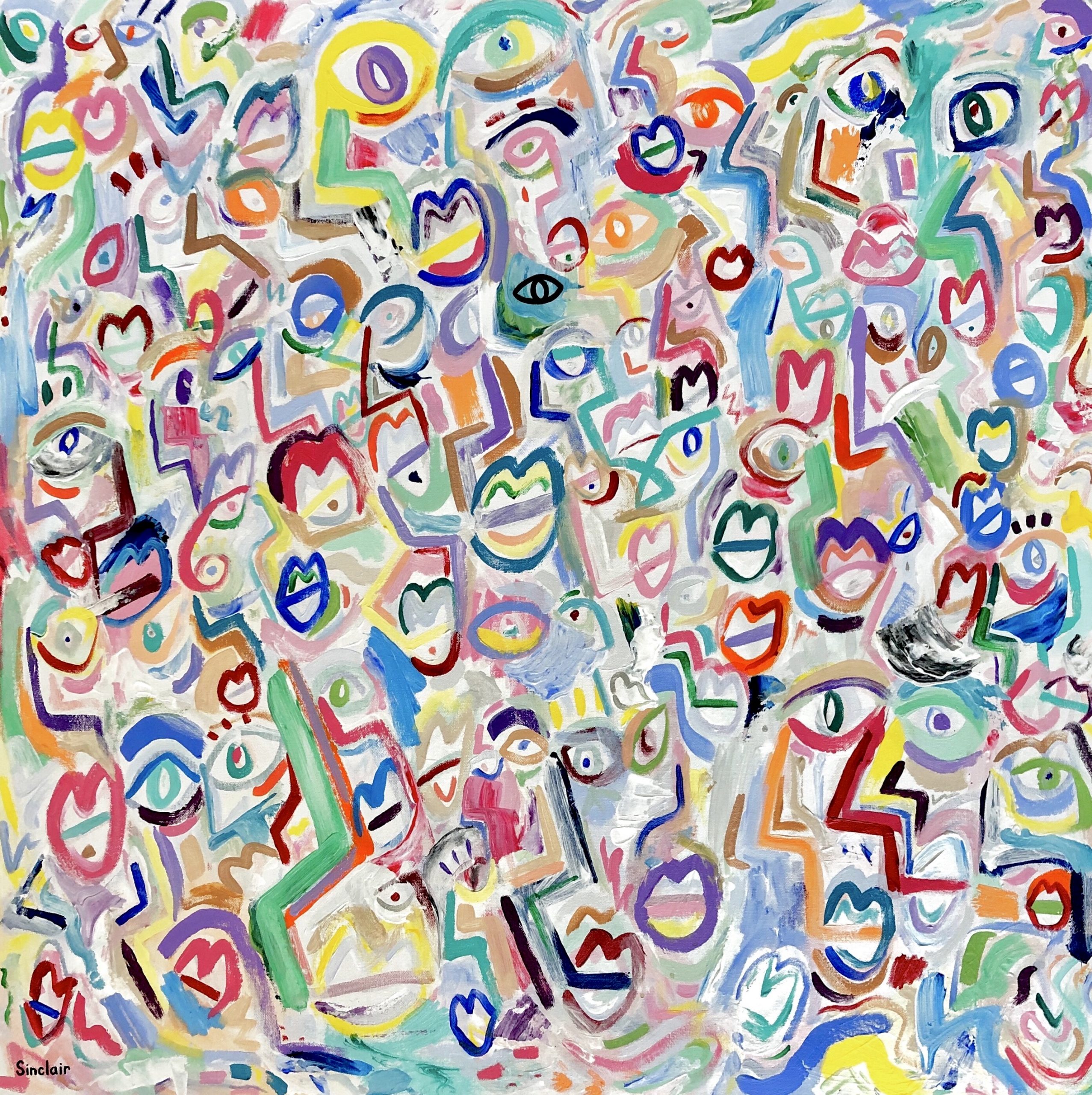
MC: That’s a good way to keep yourself on your toes.
CS: Definitely! There’s also times where I need to step back and reassess where I’m at so you can jump back in the way you want. Usually I’ll just have music playing though, I know lots of artists have the TV going or books around them, stuff like that, but I prefer soothing music so I can kind of fall into a trance and tap in.
MC: Do you have any specific artists that you go to or is it more random?
CS: It mostly depends on my mood I guess. I don’t like to plan anything when it comes to my art. If I do then I often feel like I’ll get bored, but when I go in I just play something that matches my mood, whether that’s lo-fi hip hop beats, psych rock, piano music, whatever.
MC: Earlier you brought up that you don’t like to plan anything with your art. How do you stay inspired and maintain the pace you work at while also not planning anything? I’ve found working at a high pace to be one of the biggest challenges for myself as an artist. But I don’t like to step away too long because I don’t want to feel like I’m ‘losing my touch’ or something, if that makes sense.
CS: That definitely makes sense. If I step away from something too long, my ideas change and I feel like I can’t work on that piece anymore. What I’ll do most of the time is get the things I need to get done out of the way first. That way I’m taking in inspiration from the world and taking things in from each day subconsciously. When nighttime rolls around that’s when I usually start working. As far as staying inspired, I don’t know. I know some people get art blocks and stuff like that so they need inspiration. I don’t really get art blocks, because I like to put whatever I’m feeling on my canvas, or drawing pad or whatever.
MC: Do you randomly go about your schemes of color?
CS: For the most part, I’ll just put down what I connect with the most. When I’m making a work, it becomes a battle to achieve harmony between the colors, lines and shapes I make. That’s what’s cool about physical work, there’s so much emotion involved in it. For digital work it can be more meticulous and patient even.

MC: What do you think has been the biggest challenge you’ve had to endure on your artistic journey?
CS: I think staying true to myself! Not focusing on what people think so much. Once you start creating to appease a crowd, thinking stuff like ‘will they like this? That type of thinking will kill your creativity.
MC: You’re putting yourself in a box that way.
CS: Yes! That’s funny you say that, Box was actually the name behind my first clothing brand. The idea of thinking outside the box, not putting yourself in a box, etc. That’s the biggest thing, just believing in yourself.
MC: You sort of brought it up earlier, but I wanted to talk to you about crypto art, since you recently joined SuperRare. Could you describe crypto art a bit to unfamiliar people? What role do you think it’ll play in the future of art?
CS: Yeah, the idea of crypto art is pretty broad. Digital artists and artists in general really can start to be more valued and appreciated more than they already are. It’s definitely pushing innovation in the digital sphere of art, it’s honestly kind of hard to describe since there’s so many facets of it. I think it’s going to play a really big part in the future of art. I think art will be presented more digitally, not just created, but people are going to want to experience art differently. Digital art allows for a different experience, and the crypto art community is allowing for digital art to be pushed forward a bit. I know for me personally it’s made me find more value in my own digital art.
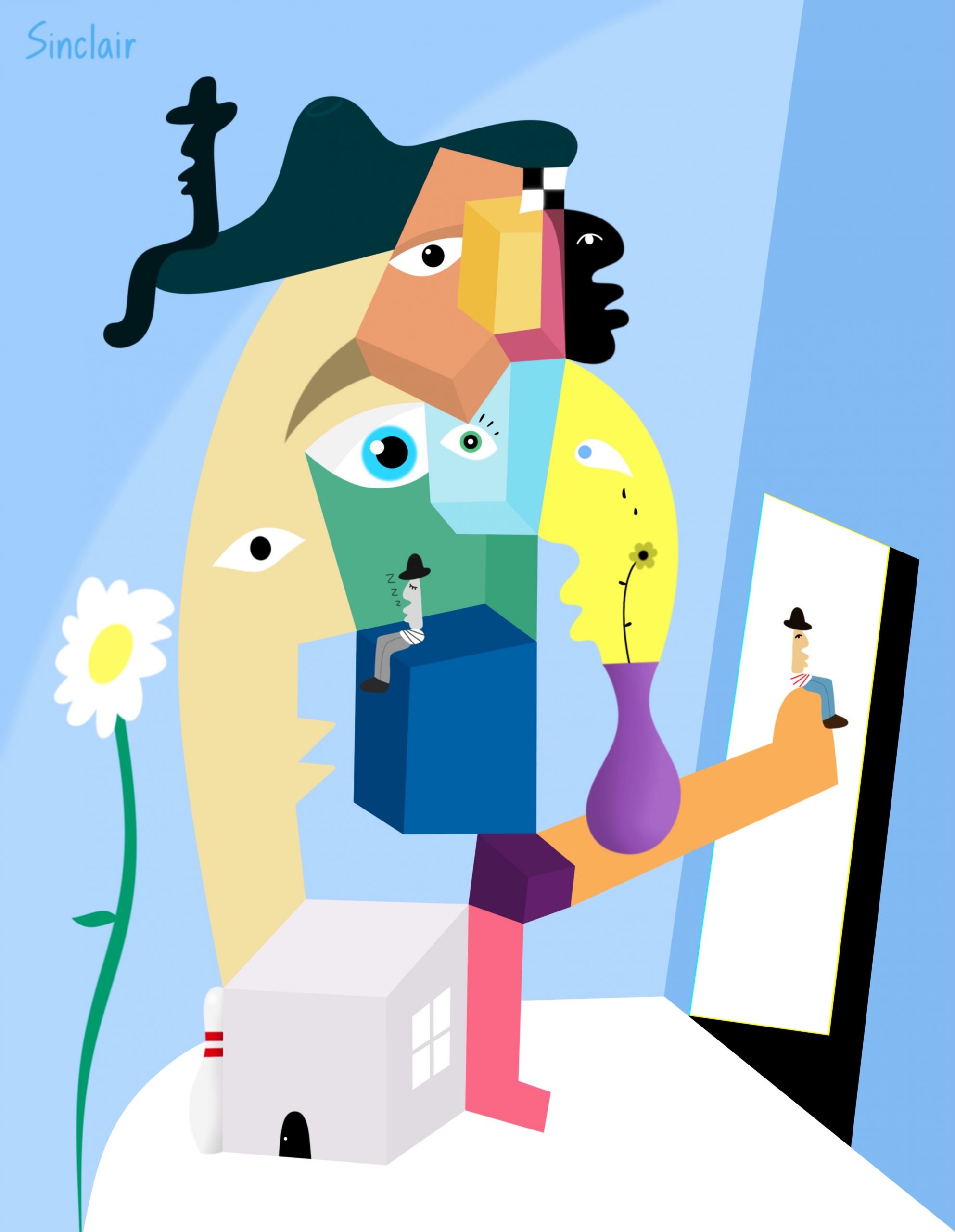
MC: What have you found value in for yourself in digital art?
CS: A couple things, really. The biggest one has been the one line animations I’ve been making. They could be experimented with. It took my original idea and I was able to reinvent it a bit, take it a step further. Digital art presents so many possibilities that just aren’t there in physical art sometimes. Crypto art poses a challenge to artists in general and what they want to do with art in general. I have to say though, the thing I’m most excited about with crypto art is the virtual exhibitions that I think people are going to start having in the future. Instead of viewing it on a wall, you’re going to be able to experience it closer. The exhibition itself will be a piece of art. Ultimately it’s been a huge blessing for me. Being able to sell my art to collectors who really care about it. It’s pushed me to innovate my work and makes me want to outdo myself every time I make something.
MC: Definitely, and I think a lot of this innovation for artists and curators alike is a result of COVID. Having to put everything online and explore the Internet further. Watching fashion shows turn into conceptual content creation, watching artists succeed digitally, all that is insane to watch grow and develop.
CS: Definitely. There’s so much potential in it, and that’s another thing I love about crypto art, it’s a worldwide audience. You can hold an art show in Chicago or LA, and obviously not everyone can go to these things, but virtual exhibitions make it possible for everyone to experience it in a unique fashion.
MC: When you’re making your art, would you say you’re competitive with yourself?
CS: I don’t know that I’d say competitive, but I push myself and I’m definitely hard on myself. If I don’t like what I’m making, I’ll throw it away, destroy it, and it’s onto the next one. I’m always trying to make what I think is best, but that’s not always what I get. My biggest thing is expressing myself at the end of the day though. I could express myself with scribbles, but that might not translate with some people. My goal is to connect with people, connect with what they’re going through, ya know? It’s our duty as artists. To make people feel something when they see your stuff.
MC: Yes, and some people view it as talent, but I think it’s more of just digging into yourself. Like you said earlier, staying true to yourself is the biggest challenge, if you’re able to dig into yourself, you’ll produce art that’s honest and vulnerable. I personally view my paintings as road maps of myself. Because that’s how I’m honest with myself, that’s how it flows for me.
CS: I love that. That goes along with what that I talked about earlier, I want to be able to connect with people in a way they’ll understand, but what I found out, especially recently, in the more I make art, is to not think about what people might react with, because when that’s not in your head while you’re creating, then that’s when the truth comes out in your art. People will connect to you being yourself. Putting what you feel on a piece of paper is not only liberating, but it takes courage. To show others, to show yourself even. But I need that release when I make art. It’s therapeutic at this point. I know that whatever happens, I will always be making art.
MC: How has living in Chicago impacted your artistic journey? Has it presented certain disadvantages or advantages?
CS: Being an artist in a big city is interesting. I’d say there’s two things to that. It’s given me a lot of sources of inspiration, and it’s given opportunities to get in contact with local spaces or galleries or show my work to certain people. And that was intimidating when I first tried it, ya know? I’m just this early 20 something year old kid with some paintings walking into a gallery with $10,000 plus works of art in there looking for a chance. But how I see it now is the more you involve yourself into the art community around you, the more you’ll feel that you belong, and it’s motivating that way.
MC: Is there any advice you’d like to give to artists out there right now?
CS: Follow your dream. Because if you’re living in someone else’s dream, that becomes your nightmare. But if you’re an artist, just keep creating, keep studying, keep experimenting.
You can follow Connor on Twitter and Instagram to keep up with his creations, and check out his website here.

